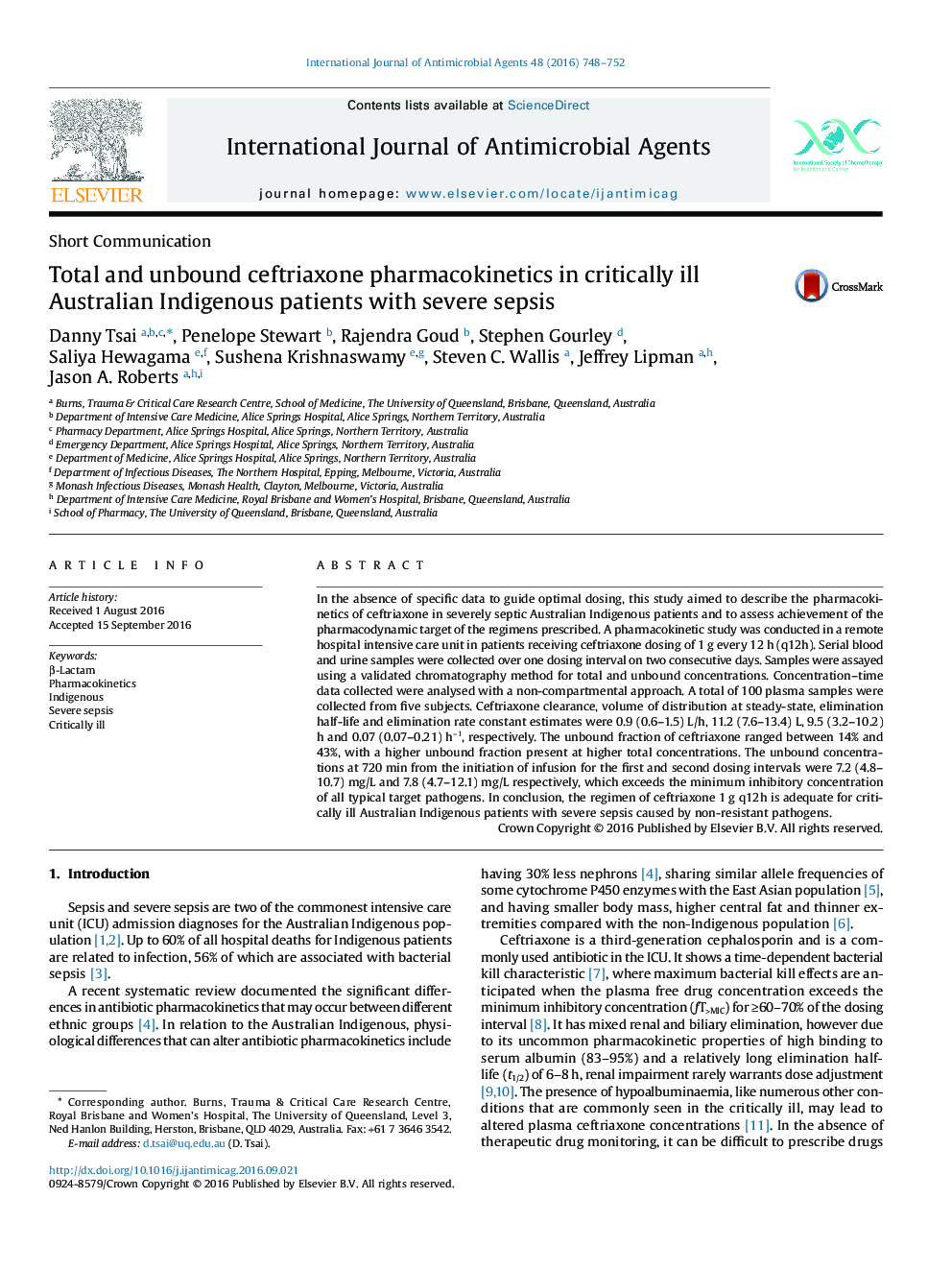| Article ID | Journal | Published Year | Pages | File Type |
|---|---|---|---|---|
| 5666873 | International Journal of Antimicrobial Agents | 2016 | 5 Pages |
â¢Ceftriaxone 1âg every 12âh is adequate for critically ill Australian Indigenous.â¢Higher unbound fraction was associated with hyperbilirubinaemia and diabetes.â¢No discernible association was found between hypoalbuminaemia and unbound fraction.â¢Ceftriaxone clearance was not associated with creatinine clearance.â¢Clearance and volume of distribution were lower than other populations.
In the absence of specific data to guide optimal dosing, this study aimed to describe the pharmacokinetics of ceftriaxone in severely septic Australian Indigenous patients and to assess achievement of the pharmacodynamic target of the regimens prescribed. A pharmacokinetic study was conducted in a remote hospital intensive care unit in patients receiving ceftriaxone dosing of 1âg every 12âh (q12h). Serial blood and urine samples were collected over one dosing interval on two consecutive days. Samples were assayed using a validated chromatography method for total and unbound concentrations. Concentration-time data collected were analysed with a non-compartmental approach. A total of 100 plasma samples were collected from five subjects. Ceftriaxone clearance, volume of distribution at steady-state, elimination half-life and elimination rate constant estimates were 0.9 (0.6-1.5) L/h, 11.2 (7.6-13.4) L, 9.5 (3.2-10.2) h and 0.07 (0.07-0.21) h-1, respectively. The unbound fraction of ceftriaxone ranged between 14% and 43%, with a higher unbound fraction present at higher total concentrations. The unbound concentrations at 720âmin from the initiation of infusion for the first and second dosing intervals were 7.2 (4.8-10.7) mg/L and 7.8 (4.7-12.1) mg/L respectively, which exceeds the minimum inhibitory concentration of all typical target pathogens. In conclusion, the regimen of ceftriaxone 1âg q12h is adequate for critically ill Australian Indigenous patients with severe sepsis caused by non-resistant pathogens.
